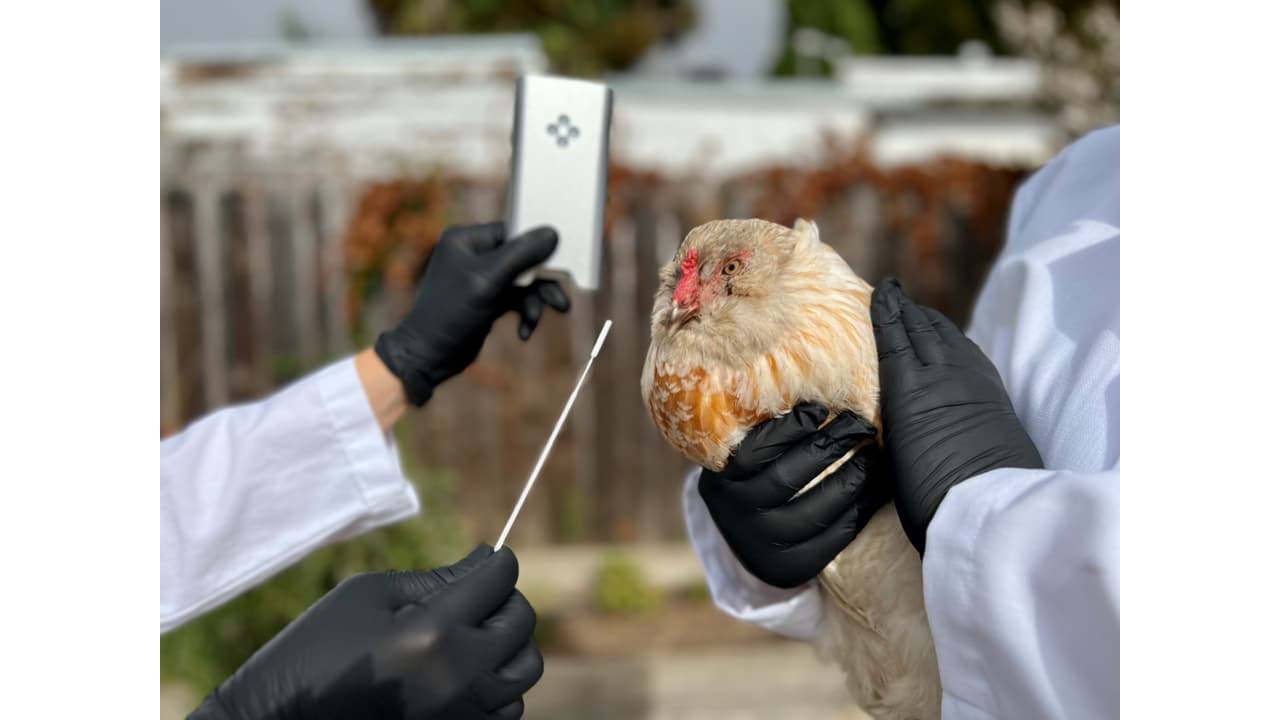Key Takeaways:
- Current H5N1 surveillance efforts in the U.S. face delays due to laboratory-based testing, limiting timely containment efforts.
- Rapid, decentralized testing solutions could improve real-time tracking and reduce the spread among livestock.
- Regulatory approvals for novel diagnostics remain a challenge, slowing adoption of effective testing technologies.
- Vaccination strategies, combined with enhanced surveillance, may help mitigate economic losses and stabilize food prices.
- Collaborative efforts between government agencies and private sector stakeholders could improve outbreak response and preparedness.
Shaun Holt, CEO of Alveo Technologies, sat down with us to discuss the challenges and opportunities surrounding H5N1 surveillance and testing in the U.S. According to Holt, current diagnostics rely heavily on laboratory testing, which leads to delays of three to seven days before results are available. “These delays allow the virus to spread undetected, putting poultry and dairy producers at risk,” Holt stated.
The Case for Real-Time Testing and Surveillance of H5N1
High-quality surveillance benefits from rapid molecular diagnostic tests that can be deployed at the point of need. Such tools could allow for more efficient data transmission to public health and agricultural agencies, facilitating faster response measures. Holt emphasized that government-funded surveillance initiatives may ultimately reduce costs in the long run by preventing extensive culling and mitigating price fluctuations. “If the government supports surveillance initiatives up front (in tandem with vaccination), ultimately, they will save money in not having to reimburse farms for required culling and will help stabilize egg prices,” he explained.
The Risk of H5N1 Evolution
While H5N1 does not currently spread efficiently among humans, its potential to evolve remains a concern. Most reported human cases have been mild, but global data indicate a mortality rate of approximately 50% for confirmed infections. The detection of the D1.1 variant in Nevada cattle, a strain previously only found in birds, highlights the importance of continued surveillance and research into possible mutations. “This is something we need to monitor closely, as the virus could potentially adapt in unpredictable ways,” Holt warned.
Regulatory Challenges for Rapid Testing Solutions
Rapid molecular testing solutions, such as those developed by Alveo Technologies, are available in Europe, the UK, and the Middle East but face regulatory hurdles in the U.S. Holt advocates for faster regulatory pathways, similar to those used during the COVID-19 pandemic, to expedite approvals for emerging diagnostic technologies. “We need a regulatory framework that recognizes the urgency of this situation and prioritizes innovative solutions,” he said.
Policy Considerations for Strengthening Response Measures
1. Accelerated Approvals for Rapid Diagnostics
The USDA, FDA, and CDC could explore emergency regulatory pathways for livestock diagnostics.
2. Pilot Programs for On-Farm Testing Against H5N1
Government agencies could collaborate with biotech firms to test surveillance technologies before full regulatory approval.
3. Shifting Toward Vaccination
A combination of vaccination and testing could help control the spread while reducing economic losses.
4. Enhanced Biosecurity Measures
Livestock movement policies could be reassessed, with testing incorporated into transport procedures.
5. Investment in Decentralized Testing
Deploying rapid tests at farms and veterinary facilities could improve outbreak containment efforts.
Economic and Food Security Considerations
Continued outbreaks could contribute to food price inflation. Recent losses in the poultry and dairy industries have been estimated at $1.4 billion, with egg prices increasing significantly. Proactive surveillance and response measures may help stabilize food prices and reduce financial strain on farmers. “Egg prices are already approaching three times what they were last year due to H5N1-related disruptions,” Holt noted.
Looking Ahead
H5N1 remains a risk to both the agricultural sector and public health. While the virus has not yet become a widespread human pathogen, early intervention is key to minimizing potential impacts. Strengthening surveillance programs, improving regulatory pathways for testing, and considering alternative containment strategies may enhance preparedness and reduce long-term risks. “We need to act now to prevent a future crisis,” Holt concluded.


